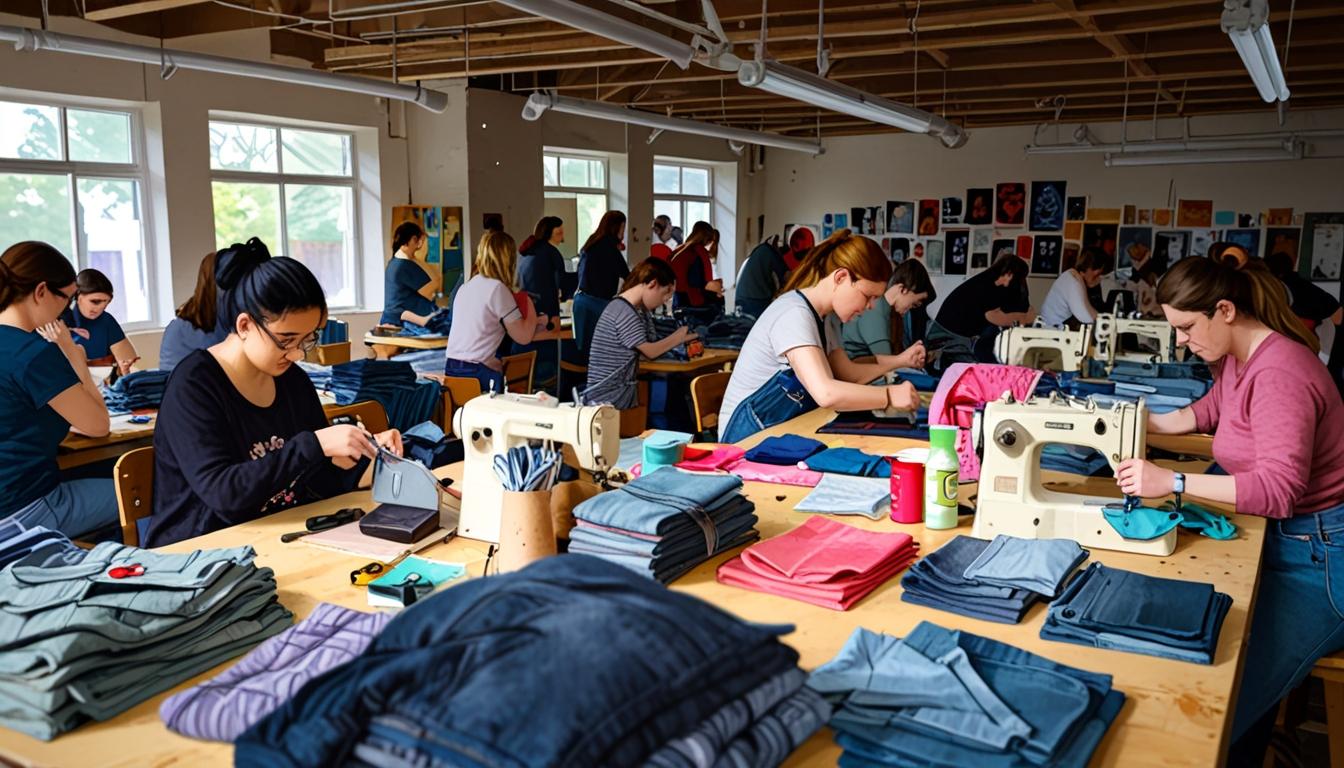Discover how old jeans can be transformed into new, functional items through creative projects while promoting sustainable living.
Worn-out jeans that have long been relegated to the back of closets may soon find new life through a variety of creative upcycling projects. The trend of transforming old denim is gaining traction as individuals look for sustainable solutions to minimize textile waste, particularly given the significant environmental burden associated with denim production. Each pair of jeans reportedly consumes roughly 1,800 gallons of water during its creation process, while conventional cotton farming practices contribute to harmful pesticide usage and pollution due to dyeing.
With millions of denim garments ending up in landfills annually, repurposing old jeans aligns with the increasing interest in sustainable living. Denim’s durability makes it ideally suited for upcycling; authentic denim, particularly that made from organic cotton, retains its strength even after extended use. Through initiatives like the Cotton’s Blue Jeans Go Green program, there is a push to convert denim scraps into useful materials such as housing insulation, demonstrating the fiber’s versatility beyond just apparel.
For those looking to embark on denim transformations, gathering materials is the first step. Individuals can begin by assessing their own collection of old jeans or sourcing from thrift stores, where a variety of denim in different colors and conditions is often available. Quality over fit should be the priority when selecting pieces, as even damaged jeans can offer useful fabric.
The necessary tools for denim upcycling include a range of basic sewing supplies such as fabric scissors, chalk for marking patterns, a denim needle, heavy-duty thread, and a ruler. While projects often benefit from a sewing machine, many can also be accomplished through hand-stitching or fabric glue.
Several practical upcycling projects include:
-
DIY Denim Bag: A durable tote bag can be fashioned from old jeans. The basic steps involve cutting the legs at the desired height, sewing the bottom closed, and crafting straps from remaining fabric. Adding the original back pocket can provide functional flair.
-
Denim Quilt: Individuals can create meaningful quilts from several denim pairs. By cutting uniform squares and stitching them together, these quilts not only serve as functional items but often become heirlooms filled with memories.
-
Denim Rugs: Given denim’s resilience, it is well-suited for creating rugs. Strips cut from jeans can be braided and sewn together into a rug that is both durable and visually appealing.
-
DIY Denim Coasters: Simple coasters made from smaller patches of denim are easy to craft and provide effective protection for surfaces.
-
Denim Apron: Crafting an apron from the back of an old pair of jeans can offer a practical solution for workshops or kitchens, lending protection during messy projects.
Beyond individual projects, the impact of denim upcycling can foster community connections. Organizations such as American Textile Recycling Services are focusing on large-scale denim reclamation, turning thousands of worn jeans into insulation for low-income housing. Some community centers even offer workshops to teach residents about upcycling methods, integrating education about textile waste into local outreach programs.
While embarking on these creative projects, individuals are encouraged to add personal touches. Techniques such as embroidery or dyeing with natural substances can further enhance the uniqueness of each item.
The issue of textile waste is pressing as the average American disposes of approximately 70 pounds of textiles yearly, with denim being a significant contributor. Through the act of transforming these discarded items into new, functional products, there is an opportunity to participate in a larger movement geared towards sustainable consumption. Initiatives like this reflect a growing understanding of how material resources can be creatively reused rather than dismissed as waste.
As the conversation around sustainability grows, the journey from discarded jeans to cherished creations underscores the intersection of creativity, utility, and environmental responsibility in crafting.
Source: Noah Wire Services




